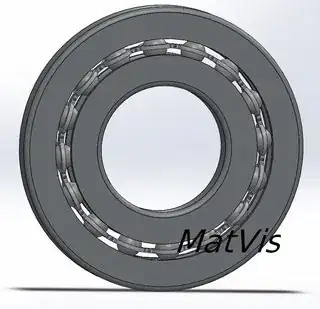Two aspects of your question can immediately be addressed, one with much less certainty than the other.
If you were to print the indicated parts using PLA on an FDM printer and assembled as much as possible up to say, the outer bearing ring, you might be able to use boiling water to soften the ring with boiling water enough to get it around the balls. It's also possible that the deformation will effectively destroy the usefulness of the part.
On the other item, SLS is virtually perfect for this type of part. The un-sintered nylon powder provides positional support for all of the other parts being sintered. When the print is completed, the powder is blown out with high pressure air, freeing up the individual components as per the original design.
Be advised that there is to be expected some shrinkage of the parts which will affect any segment of the component that has tight or close clearances.
From Shapeways site regarding SLS printed parts (Shapeways)
Executive summary:
maintain a wall thickness of at least 1mm,
accuracy is 0.1mm,
always keep a clearance of 0.6mm
and parts may have a deviation of 0.2mm.
When designing something mechanical that has to be 3D printed or when adding a mechanical feature to your model there are several main considerations.
Also listed in the above link are the considerations of enclosed parts. Each of the balls in the bearing design may or will be printed as a hollow sphere filled with nylon powder. The bearing rings will also be printed as shells, unless appropriate steps are taken to make them solid.
By the same token, if a part need not be solid and can be designed with holes to "drain out" the un-sintered powder, the cost will be reduced accordingly.
